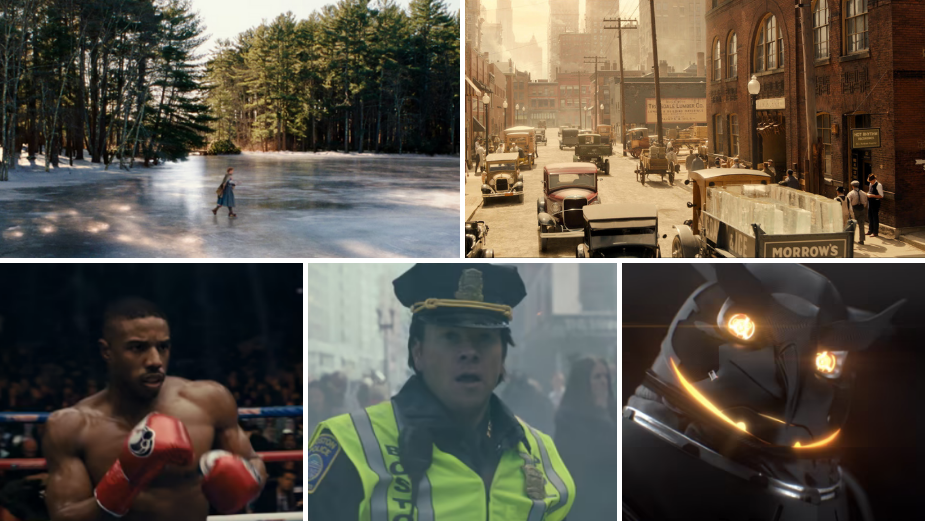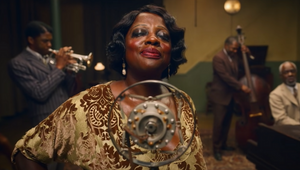
ZERO VFX — A Team Of Multi-Hyphenates Favouring The Personal Approach

For Brian Drewes, the founder of ZERO, the business side of, well, business was always second nature. Before ZERO, Drewes cut his teeth managing large projects and other VFX companies. Those who know Drewes will confirm that ideas come to him all the time, and out of one of those ideas ZERO was born. Starting small had its advantages as Drewes and his co-founders were consciously building a company that was flexible enough to take chances, with the ability to follow unexpected routes. Almost a decade later, the nimble approach remains central to ZERO’s operation — it’s the reason behind their continued success.
Instead of pouring all their efforts into either commercials or features, ZERO resisted the specialisation route, choosing instead to do both and to do it extremely well. Today, the mix of artists, supervisors, producers, and technologists work under one (for now, digital) roof. Together they embody the company’s ethos of “creating work that is grounded and maintains a sense of ‘in-world’ reality.” The company name is a reflection of that too, hinting at the way ZERO’s job is done when it seamlessly fuses within the finished product.
Greta Gerwig’s 2019 Little Women epitomises the approach. The decidedly “non-VFX” feature had well over 500 VFX shots, with the ZERO team creating fully digital environments and period enhancements to lend the film its distinctive look and feel. More recently, ZERO oversaw set work and all shots on the Oscar-winning Ma Rainey’s Black Bottom, once again applying their invisible VFX magic. ZERO’s work can also be spotted (or not!) in The New Mutants, Creed II, Tomb Raider, and across some of the world’s biggest brands.
Above: Video of feature film “Little Women”
Organic Evolution
Surprisingly, ZERO’s approach to work is inspired by Drewes’ background in interdisciplinary environmental studies. He says, “I studied organic farming at a super hippy college in Washington State, one that embraced the idea of interdisciplinary learning, so it’s just natural to the way I think. The artists at ZERO all have certain strengths and specialist capabilities, like FX simulation in Houdini, or character modelling, but having a workflow that supports flexible, creative thinking is where film-makers and clients ‘feel’ a real difference. This allows us to navigate challenges without blowing everything up.” The interdisciplinary pipeline is one of the company’s main USP’s, with art meeting the structure needed to respond to changes while continually iterating and improving the work that leaves the door.
Speaking about the company’s inception in 2010, Drewes says that “the first few years were rough going”, attributing it to Boston’s lack of cutting-edge media and entertainment companies at the time. Looking back, he now believes that making it through the first two years was a huge success in and of itself. The need to operate efficiently arose very quickly and the company turned to the cloud years before it became industry practice. With this, another branch of ZERO was born, the tech spinoff ZYNC, bringing cloud computing to the industry at large. After a lot of success, they exited it via a sale to Google — a high-water mark for Drewes.
Driven by Technology
Tech remains at the heart of what ZERO does so well. With the uncertainty of a post-pandemic world looming large, ZERO is scaling the company to continue working in a distributed fashion and encouraging staff to find a working style that suits them best. Innovation is on the horizon too, with research and development underway for virtual production techniques and volumetrics to embrace the coming wave of AR, real-time and live-event / in-camera VFX.
“Technology has always been a major part of what we’ve done, and provided a lot of the basis for our successes,” Drewes explains. “VFX has always been about reconciling the digital and analog worlds (CG augmentation of real-world scenarios) and technology is catching up to make this a more real-time and accessible experience across the content spectrum, from AR and live events to virtual production stages.”
When working with clients, ZERO prides itself on the human connection every staff member has to the projects at hand. They’re also proud of the deep connections built with clients over the decade of operation. As the relationships grow and develop, the work gets better: “Brainstorms are more effortless, honesty increases and there’s simply a level of trust that exists in both directions. And it’s not just EP to EP, but between the entire teams.”
Human Nature
Despite some of the huge project scopes that land on ZERO desks (from the likes of A-list streamers, film studios and brands), the working process remains intimate — that’s how ZERO gets the best results.
“It helps us walk a little taller and own the responsibilities as co-creators and this helps immensely with commercials. Vice-versa, commercials are great because they exercise the need for quick efficiency due to the turnaround times whereas in features, with a year-long production-cycle, you can’t run the marathon as if it’s a sprint. But when you do need to, and you haven’t practiced sprinting, it can be tough on everyone.”
Granularity, intimacy, and a team of multi-hyphenate talent drives the quality of work present today on ZERO’s showreel, with no sign of slowing down. The future is looking bright and Drewes is optimistic about what’s to come as ZERO explores new frontiers of technology while recognising that the human touch is the key to their competitive advantage.









